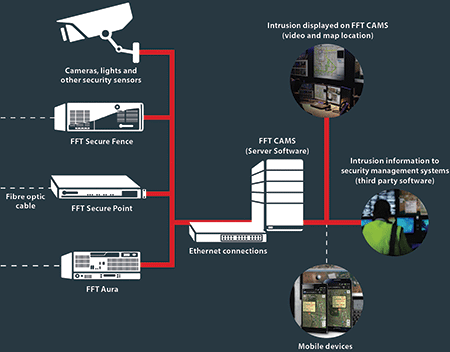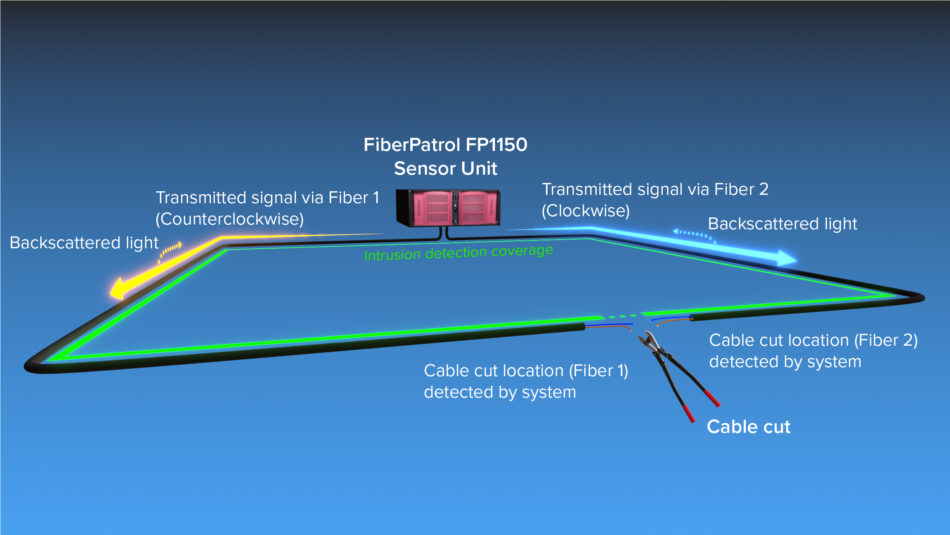How to Set Up a Fiber Optics Infrastructure for Security Installations in Commercial Spaces
How to Set Up a Fiber Optics Infrastructure for Security Installations in Commercial Spaces
Blog Article
Why Fiber Optic Security Solutions Are the Future of Security
The transition to fiber optic safety and security systems marks a considerable innovation in the world of protection, driven by their extraordinary information transmission capabilities and durability to external interferences. These systems not just help with faster and much more dependable interaction however also provide an economical option with decreased maintenance demands. As the landscape of protection advances alongside emerging modern technologies such as AI and IoT, the capacity for fiber optics to boost and redefine protection infrastructures comes to be significantly noticeable. The effects of these advancements raise important questions about the future of safety actions and their efficiency in an ever-changing atmosphere.
Benefits of Fiber Optic Equipments
One of the key advantages of fiber optic systems is their premium bandwidth capability, which assists in the transmission of huge volumes of data over lengthy distances without considerable loss. This characteristic is specifically helpful for security applications that require the continual surveillance and transfer of high-definition video clip feeds, sensor data, and various other essential details. Fiber optics can accommodate the growing demands of modern security systems, making certain that information continues to be undamaged and dependable.
In addition, fiber optic cables are much less at risk to electromagnetic disturbance, which can be a significant problem in settings with various electronic devices. This resistance enhances the stability of the data being transmitted, consequently reducing the threat of data breaches or system failings. Furthermore, fiber optic systems are naturally extra secure than traditional copper cords, as tapping into a fiber optic line without discovery is extremely hard.
The longevity of fiber optic cords additionally adds to their allure. They are immune to environmental aspects such as dampness and temperature level changes, minimizing maintenance costs and boosting system durability. Generally, these benefits setting fiber optic systems as a robust and reliable option for contemporary security frameworks, guaranteeing dependable and safe and secure data transmission.
Boosted Data Transmission Speed

The capacity to transmit substantial amounts of information quickly assists in the smooth assimilation of high-definition video feeds and advanced analytics. Security systems can now process and assess information in real-time, boosting feedback times and situational understanding. Additionally, fiber optic connections sustain longer transmission distances without degradation of signal quality, making them suitable for expansive safety and security networks.
The boosted speed of fiber optic systems not only boosts the effectiveness of safety procedures but additionally lowers latency. This is specifically important in critical circumstances where prompt decision-making can prevent protection violations or mitigate prospective risks. As organizations continue to focus on safety and efficiency, the need for fast and trustworthy data transmission will certainly solidify fiber optic systems as a cornerstone of modern safety and security infrastructure.
Resistance to Disturbance
Fiber optic protection systems consistently demonstrate outstanding resistance to electromagnetic interference, an essential benefit in settings susceptible to digital sound. Unlike typical copper cables, which can be negatively impacted by electromagnetic areas, radio regularity interference, and other types of electric disturbance, fiber optic cables use link light to send information. This integral residential or commercial property ensures that the signals remain clear and unaltered, regardless of surrounding electronic task.
The usage of glass or plastic fibers in fiber optic innovation produces a barrier against interference, enabling reliable information transmission even in challenging situations such as commercial centers, metropolitan locations with high digital traffic, or areas near radio towers. This particular substantially lowers the likelihood of signal degradation or loss, making fiber optic systems specifically appropriate for safety and security applications where honesty and precision of data are vital.
In addition, this resistance to interference improves the overall efficiency and dependability of safety systems, guaranteeing that monitoring and sharp systems function effortlessly. In a world where security is increasingly endangered by advanced technologies, the resilience of fiber optic systems sticks out as an essential feature, strengthening their condition as a necessary part of modern-day safety framework.
Cost-Effectiveness Gradually
Substantial expense savings can be achieved with time with the application of fiber optic safety systems. While the initial financial investment may appear greater compared to standard copper-based systems, the long-lasting economic benefits come to be evident via decreased functional and upkeep prices (fiber security). Fiber optic cable televisions are naturally extra long lasting and less prone to environmental factors, which equates to decrease replacement and fixing expenses over their life expectancy
Additionally, fiber optic systems call for much less power to operate, which better reduces energy prices. Improved information transmission capacities allow for less repeaters and amplifiers, reducing devices financial investment and improving setup processes. The scalability of these systems additionally contributes to cost-effectiveness, as companies can increase their safety and security infrastructure without sustaining significant extra expenditures.
An additional variable to think about is the raised performance in tracking and response capabilities that optical fiber offer. Boosted real-time data transmission can lead to quicker occurrence feedback times, potentially mitigating losses and responsibilities associated with safety breaches. In amount, the long-lasting benefits of fiber optic security systems not just warrant the first expense however additionally place them as an economically prudent choice for organizations looking for durable security solutions.

Future Advancements in Security
Progressing view publisher site modern technologies are readied to reinvent protection systems, incorporating man-made knowledge (AI) and machine knowing to enhance risk detection and feedback capacities. These innovations will permit find out protection systems to analyze huge quantities of information in real-time, identifying patterns and abnormalities that suggest prospective hazards. This aggressive method will enable quicker decision-making and more reliable incident reactions.
Additionally, the consolidation of the Web of Points (IoT) is leading the way for interconnected protection tools, providing thorough monitoring and surveillance. Smart sensing units can pass on information regarding ecological changes, while automated signals can alert protection employees quickly of dubious activities.
Additionally, the evolution of biometric technologies will additionally strengthen protection systems. Face recognition, fingerprint scanning, and retina recognition are becoming extra innovative, providing layers of verification that are difficult to bypass.
Verdict
Finally, fiber optic safety systems represent a substantial innovation in protection technology, offering exceptional information transmission speed, resistance to electro-magnetic interference, and long-lasting cost-effectiveness. As the demand for advanced security solutions remains to expand, the assimilation of optical fiber with arising innovations such as AI, IoT, and biometrics will better boost security frameworks (fiber security). The mix of these developments will ensure a much more safe and secure and receptive environment, strengthening fiber optics as a keystone of future safety and security systems
Report this page